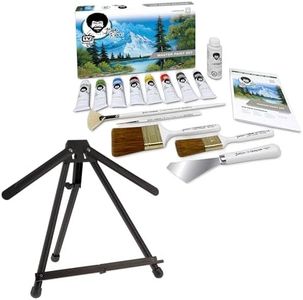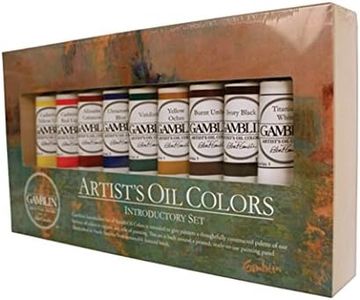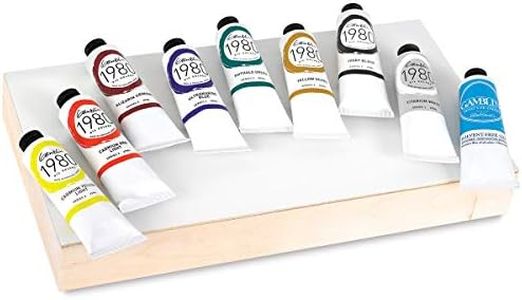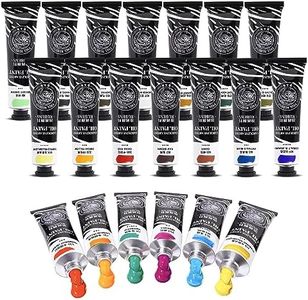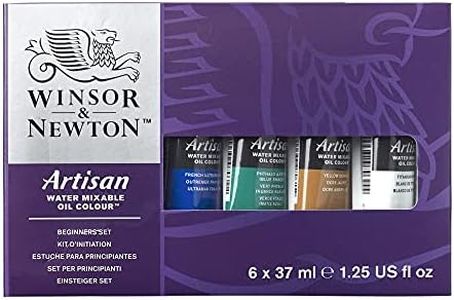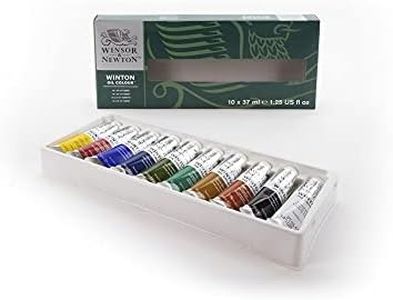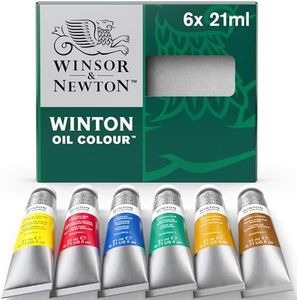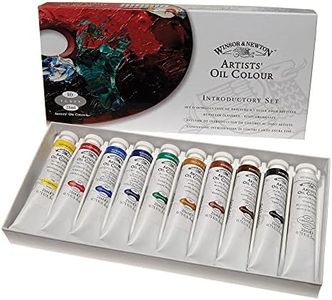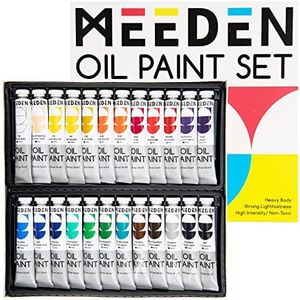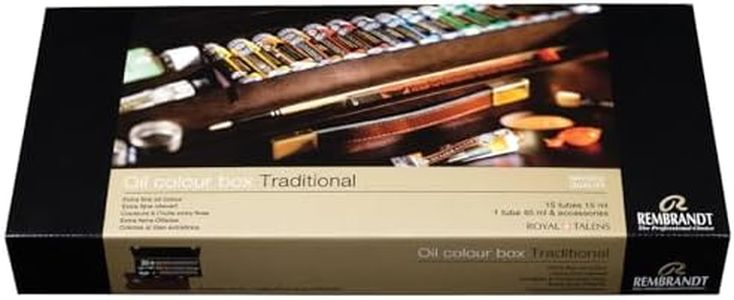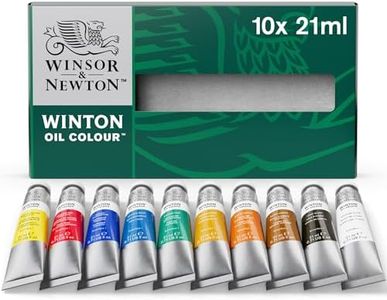We Use CookiesWe use cookies to enhance the security, performance,
functionality and for analytical and promotional activities. By continuing to browse this site you
are agreeing to our privacy policy
10 Best Oil Paint Sets
From leading brands and best sellers available on the web.Buying Guide for the Best Oil Paint Sets
Choosing the right oil paint set can greatly influence your painting experience, whether you're a beginner or an experienced artist. When deciding on a set, consider how and where you'll be painting, your style, and your plans for growth as an artist. Understanding a few key specifications will help you select a set that feels just right for your needs.Color RangeThe color range is the number and type of distinct colors included in the oil paint set. This is important because a wider range gives you more flexibility to mix unique shades and capture different moods or subjects in your work. Basic sets often contain around 6-12 colors, which are good for those starting out or focusing on learning color mixing. Medium sets can offer 15-24 colors, providing more ready-to-use variations for more diverse painting subjects. Larger sets go above 24 colors and suit artists who want to avoid mixing and prefer having a broader palette at hand. If you're just beginning, a basic or medium range is usually sufficient; more experienced artists or those working on detailed, vibrant works often enjoy the freedom of a larger set.
Pigment QualityPigment quality refers to how pure and vivid the colors are in each tube of paint, as well as their ability to mix cleanly with other colors. This is important because higher quality pigments provide richer, longer-lasting color and better results in blending. Student grade sets use less expensive, sometimes mixed pigments, which can make them affordable but with less intense colors and sometimes muddy mixes. Artist or professional grade sets use high quality, single pigments, ensuring vibrant results and better mixing. Pick a student grade set if you're practicing techniques or experimenting. Go for artist grade when you care about permanence and precise, bright color in your final artworks.
Tube SizeTube size indicates how much paint you get per color, usually measured in milliliters or ounces. Smaller tubes are excellent for beginners or those who paint infrequently, letting you try more colors without waste. Medium-sized tubes fit most people: frequent hobbyists or students practicing regularly. Large tubes are ideal for artists working on big canvases or who use a lot of specific colors. Think about how much and how often you paint—smaller tubes for learning and experimenting, larger ones if you’ve settled into a steady painting habit.
Drying TimeDrying time describes how long it takes the paint to become touch-dry on the canvas, which matters because it affects how you layer and work over your painting. Some oil paints dry relatively quickly within a few days, while others can take weeks. Shorter drying times are best for artists who want to work faster or layer sooner, while longer drying times are useful if you like to blend and work wet-on-wet. Choose a drying time that matches your process—quicker if you’re impatient or on deadlines, slower if you want flexibility for adjustments.
LightfastnessLightfastness tells you how resistant the paint colors are to fading over time when exposed to light. It's important if you want your work to look as good years from now as it does today. Paints are generally rated from poor to excellent lightfastness. For timeless or sellable work, pick a set with high lightfastness ratings. If you’re experimenting or learning, you may not need the highest rating, though it’s still wise to avoid colors known to fade quickly.
ConsistencyConsistency refers to how thick or smooth the paint is straight from the tube. Thicker, buttery paints offer great texture and brushstroke visibility, letting you build up layers for expressive effects. Smoother, softer paints spread more easily and are good for fine details or thin glazing. Those who like bold, textured work might prefer heavier consistencies, while detailed or layered painters might opt for softer, more fluid paints. Consider your style and what feels best under your brush.


